
This is the fifth winter since I’ve been heating my house with a Mitsubishi* heat pump. And finally I got to see something I’ve missed every time it happened until last week. Yep, I’m talking about seeing frost on the outdoor unit of my heat pump. So I ran for my phone and shot a video of the heat pump going through its defrost cycle.
The video here explains a bit about how heat pumps work, why frost appears, what happens during the defrost cycle, and some details about the consequences of a frosty heat pump. If you don’t want to watch the video, you can read the transcript below.
Transcript of video:
Weekly Newsletter
Get building science and energy efficiency advice, plus special offers, in your inbox.
Hi, this is Allison Bailes with Energy Vanguard. And this is what the outdoor unit of my heat pump looks like. This one happens to be a Mitsubishi variable-capacity heat pump with an inverter-driven compressor, but I’ve got something special to show in this video and it applies to all heat pumps.
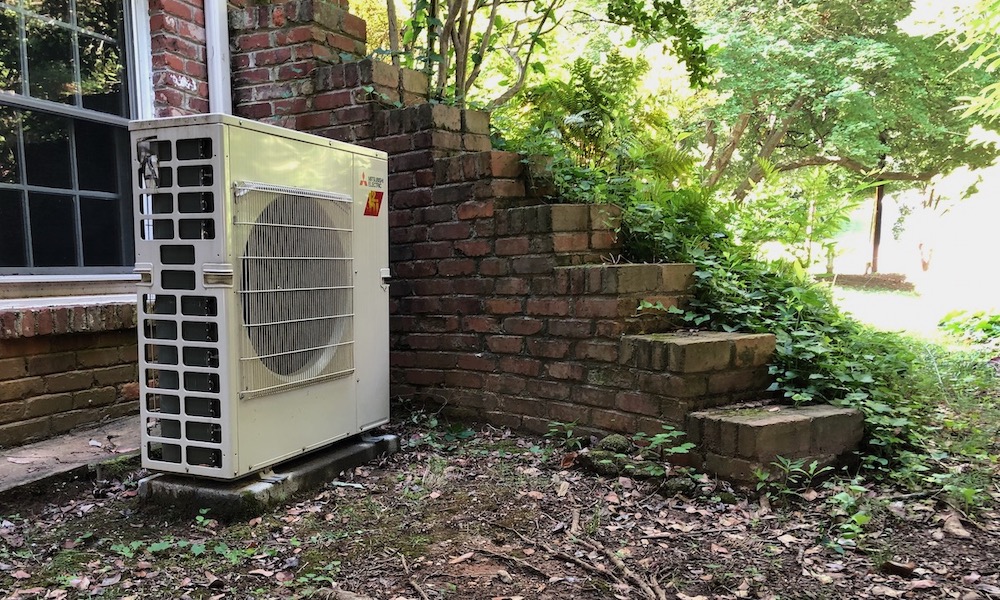
Now, when I say heat pump, you’re probably thinking about HVAC equipment that can do both heating and cooling. But actually, an air conditioner is a heat pump. So is a refrigerator. And a dehumidifier. All of these devices pump heat from one place to another. The only distinction among the various types I just mentioned is whether they pump heat in one direction or two.
The reversing valve
The kind of heat pump that both heats and cools does so because of this component. It’s called a reversing valve, which tells you exactly what it does. It reverses the flow of heat. In summer, it sends heat from indoors to outdoors. In winter, it reverses and sends heat from outdoors to indoors.
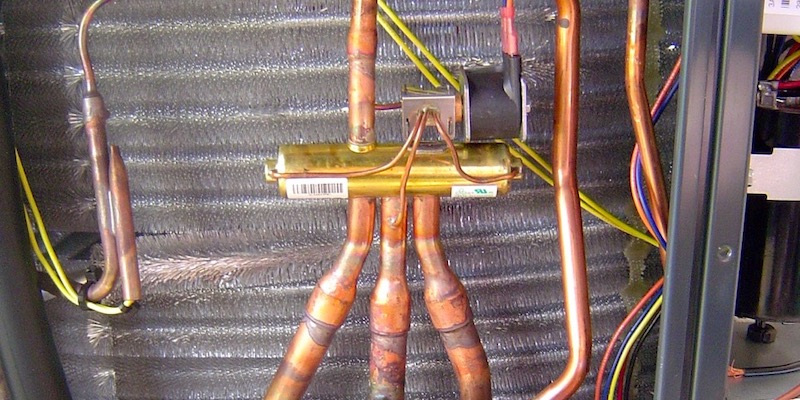
So a more appropriate a name for this type of equipment would be a two-way heat pump. But yeah, I know that’s not gonna get adopted.
Back of the outdoor unit
Anyway, let’s get back to that interesting heating-mode phenomenon I want to show you. Here’s the back side of my heat pump’s outdoor unit. Most of what you see there is the outdoor coil. The refrigerant, which carries the heat from one place to another, goes through copper tubes embedded in vertical aluminum fins.
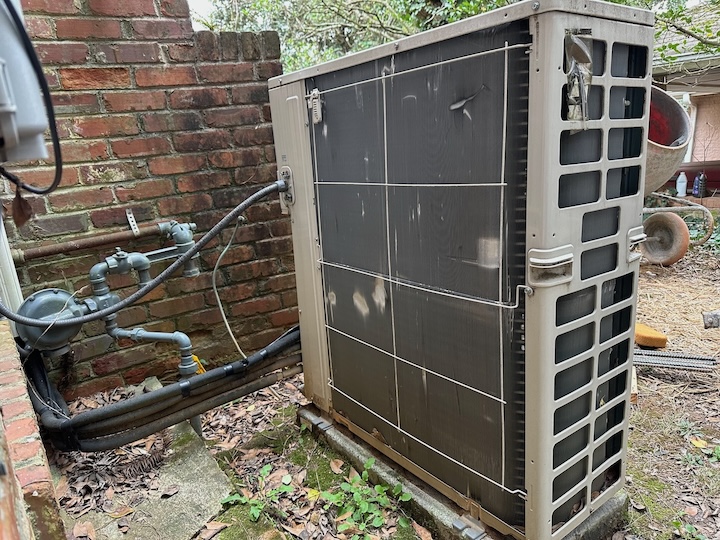
That’s where the heat exchange happens. In summer, the heat goes from the coil to the outdoor air. In winter, the heat goes from the outdoor air into the coil.
Frost on the coil
Now here’s that thing I want to show you. Because the heat pump is pulling heat out of cold air, this is what can happen. Sometimes it gets covered with frost!
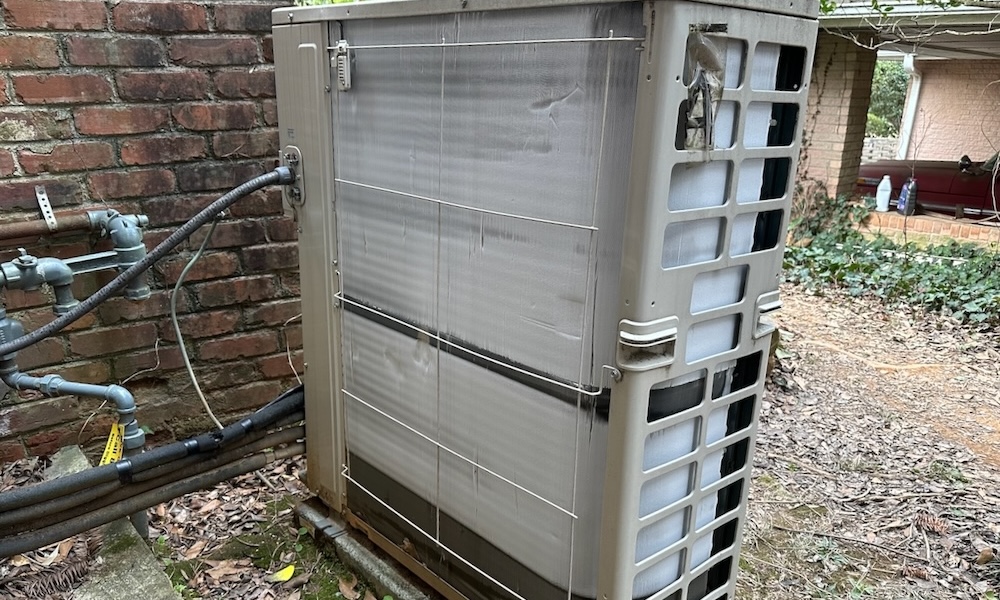
Why does frost form? Because heat flows from hot to cold…or in this case, from cold to colder. That’s the magic of a heat pump in heating mode. It makes the outdoor coil colder than the outdoor air.
And because of that, moisture in the outdoor air can condense or freeze on that outdoor coil. Which is what happened here.
So, what do you think the outdoor temperature was when I took this photo?
Nope. No. Not that either. Sorry.
Outdoor temperature
It was actually, as you see here, close to 50 °F, believe it or not. (That’s 10 °C for the rest of the world, by the way.)
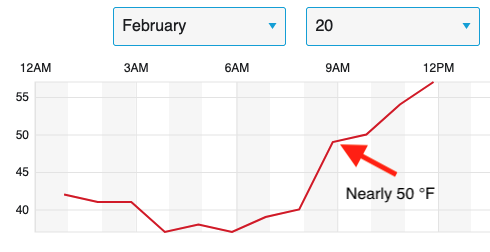
Heat pumps do magic. They can create really cold temperatures, even cold enough to freeze water when the outdoor temperature is well above freezing, as you see here.
Now, the thing about frost on the outdoor coil is that it can reduce the airflow across the coil. And that reduces the coil’s ability to absorb heat, making it less efficient.
So, we don’t want frost there. That’s why heat pump manufacturers have defrost cycles built into their equipment.
Reversing valve, again
And guess how that works. I’m showing the reversing valve here because to melt that frost, the heat pump reverses and goes back into cooling mode.
Video of defrost happening (skip to 3:20 mark of video above)
Now, here’s a video of my heat pump going into its defrost cycle. You can see that it’s begun because some of the frost has already melted.
So defrost works by switching from heating mode to cooling mode. That means it’s bringing heat from indoors and dumping it outdoors. The refrigerant flowing through that outdoor coil now has a lot of heat from indoors. And that’s how it melts the frost.
Also, notice the grass blowing at first but then stopped. When the outdoor unit switched off. The purpose of that is to put as much of that heat from indoors into melting frost, not putting it into the outdoor air. By putting all that heat into the frost, it melts quicker and you can see it dripping off the bottom now.
But there’s a caution in here for those of you in cold climates. Because if that melted frost drips down and refreezes, you can have problems.
Ice beneath outdoor unit in Minnesota
This is a photo sent to me by Randy Williams, a home builder in northern Minnesota. The first thing to note here is that cold air is dry air. The colder the temperature, the less water vapor is available to condense and freeze. But even in a really cold climate, as you see here, there’s still enough water vapor to cause problems.
![Stalagmites of refrozen melted frost beneath an outdoor unit in Minnesota [Courtesy of Randy Williams]](https://www.energyvanguard.com/wp-content/uploads/2024/02/heat-pump-outdoor-unit-minnesota-frozen-condensate.jpg)
Ice on sidewalk in North Carolina
But this can be a problem even in less severe climates. Here’s a photo I took in North Carolina. That’s ice on the sidewalk near the heat pump outdoor units.
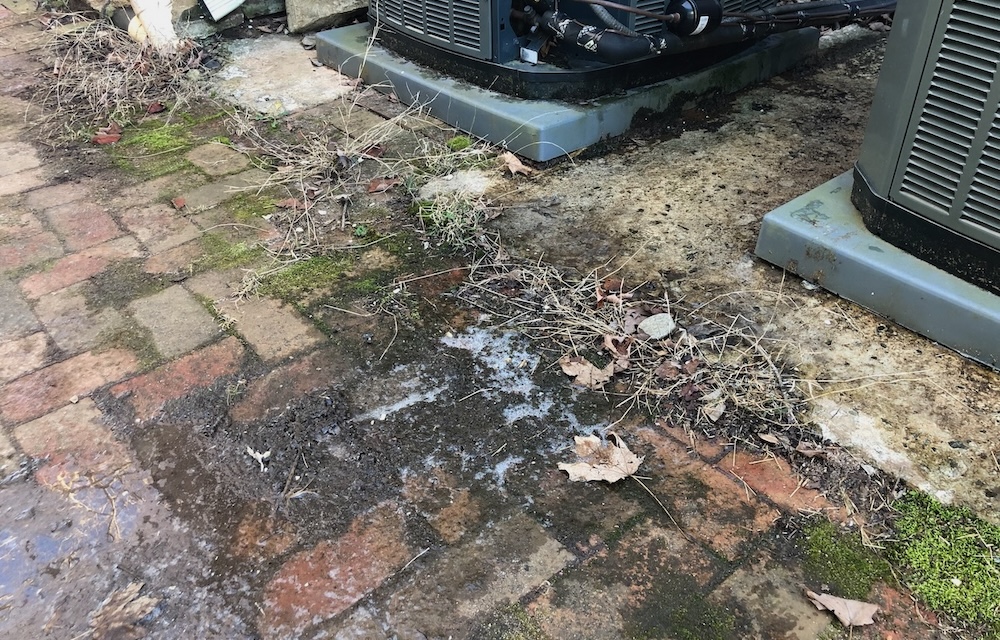
Graph of energy use
Let’s wrap this up with a look at my electricity data for my heat pump. The graph here shows how much electrical power the heat pump is drawing before the defrost cycle started (big peak on left).
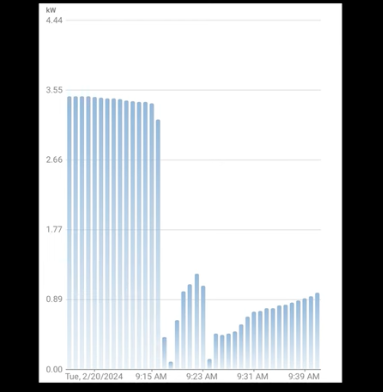
Then, when defrost started, the power use goes down to almost nothing while the reversing valve changes the flow. As the heat pump goes into cooling mode, power use increases. Then it drops to nearly zero again as the reversing valve changes the flow again. And the heating mode results in increasing electrical power use again.
Supply air temperature
Now, what effect does the heat pump turning into an air conditioner on a cold day have on your comfort? A heat pump normally puts out air at a temperature of about 100 °F in heating mode.
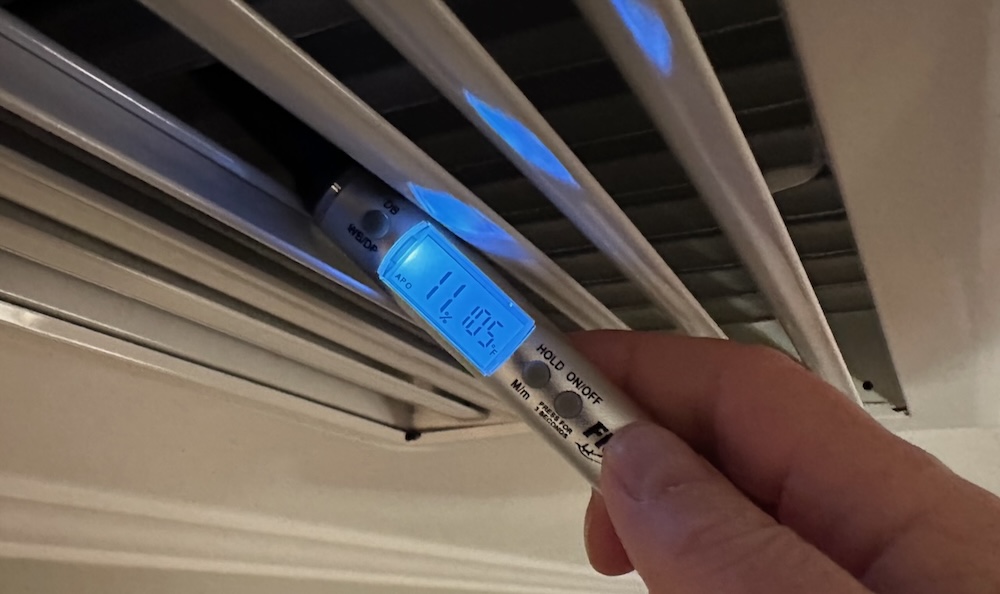
In cooling mode, its job is to make cold air. But no one wants cold air blowing into their house on a cold day. The good news is that manufacturers heard those complaints from the early years of heat pumps.
Electric resistance “strip” heat
One solution is to turn on the auxiliary heat when the defrost cycle starts. That heats up the now cooled air before it blows out of the vents.
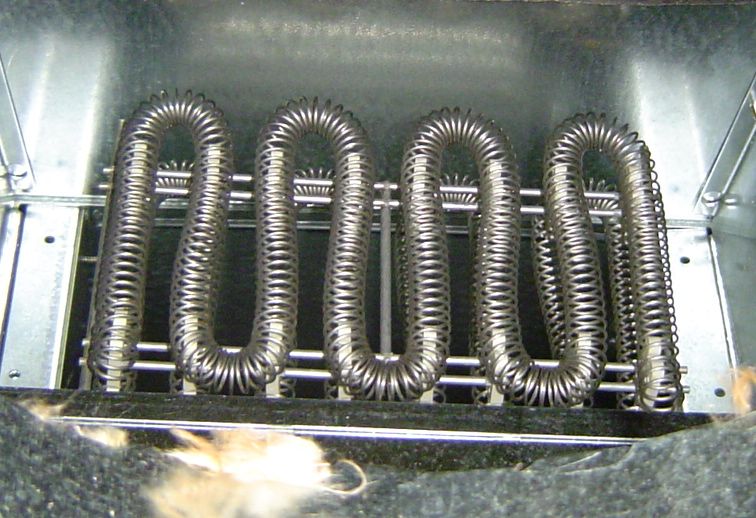
In my case, though, I don’t have auxiliary heat. But with the Mitsubishi heat pump I have the blower stops during the defrost cycle. It doesn’t blow any cold air indoors so we have no comfort problems.
Normal frost
To close, let me just remind you that frost on the outdoor unit of your heat pump is perfectly normal. When it builds up enough, the defrost cycle begins and melts it away.
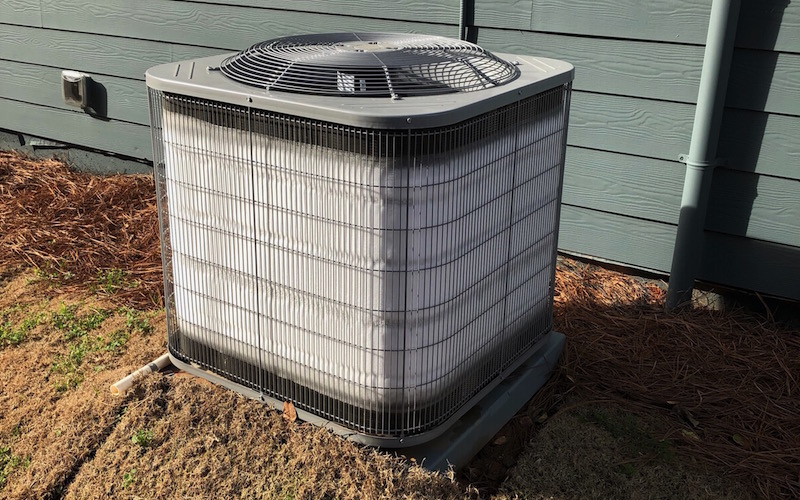
Too much frost
But, if you see this much frost on your heat pump, something is wrong. Call your HVAC company.
![Too much frost on a heat pump [Courtesy of Josh Littrell]](https://www.energyvanguard.com/wp-content/uploads/2024/02/heat-pump-hvac-frozen-outdoor-unit-winter-kentucky.jpg)
Allison A. Bailes III, PhD is a speaker, writer, building science consultant, and the founder of Energy Vanguard in Decatur, Georgia. He has a doctorate in physics and is the author of a bestselling book on building science. He also writes the Energy Vanguard Blog. For more updates, you can subscribe to Energy Vanguard’s weekly newsletter and follow him on LinkedIn. Images courtesy of author, except where noted.
* Disclosure: Mitsubishi is a sponsor of Energy Vanguard.
















12 Comments
Enjoyed this piece!
It's my experience that the units make a noise _well_ above their max noise rating when the reversing valve releases and the unit goes into defrost. Bad enough that we paid to have the outside units moved away from bedrooms.
Anyone got any data on the noise that one would expect to be produced by defrost externally? Should that be part of the rating on the units?
jameshowison: I've heard others talk about the defrost noise, too, but my Mitsubishi certainly didn't during the one defrost cycle I caught. And we've never heard it from indoors.
Interesting. I wonder if it is model dependent. Ours were MXZ-4C36NA4-U1 (with a branch box going to multiple indoor heads).
You say "were." Did you get rid of them?
We have the MXZ-3C24 with two indoor units and no branch box.
Ahh you caught the elusive frost cycle in the wild (using my best aussie accent). Good huntn’ to ya. Seriously, good article Allison! Hope all is well with you. Oh, who makes that little sensor you showed taking the humidity/temp from your minisplit? Couldn’t quite make it out.
justinjones: Yes, I did! Fieldpiece makes that probe.
https://trutechtools.com/PRH2?gad_source=1
The OCD in me wants to comb out those squashed fins even if it is mostly cosmetic.
John,
I'm with you. I think GBA should be more aware of how such photos can affect our sensibilities!
joshdurston & Malcolm: I also wanted to comb them out, but the installers told me it could end up damaging the unit for little to no improvement beyond the cosmetic.
Allison,
The problem is entirely ours.
I'm curious about the non-frosted horizontal bands, is there no refrigerant tubing thru those sections of the coil?
Re. coil straightening, they make coil combs of various pitches that should be able get rid of the worst of it without a significant risk of damage unless you were really rough and careless.
Log in or create an account to post a comment.
Sign up Log in